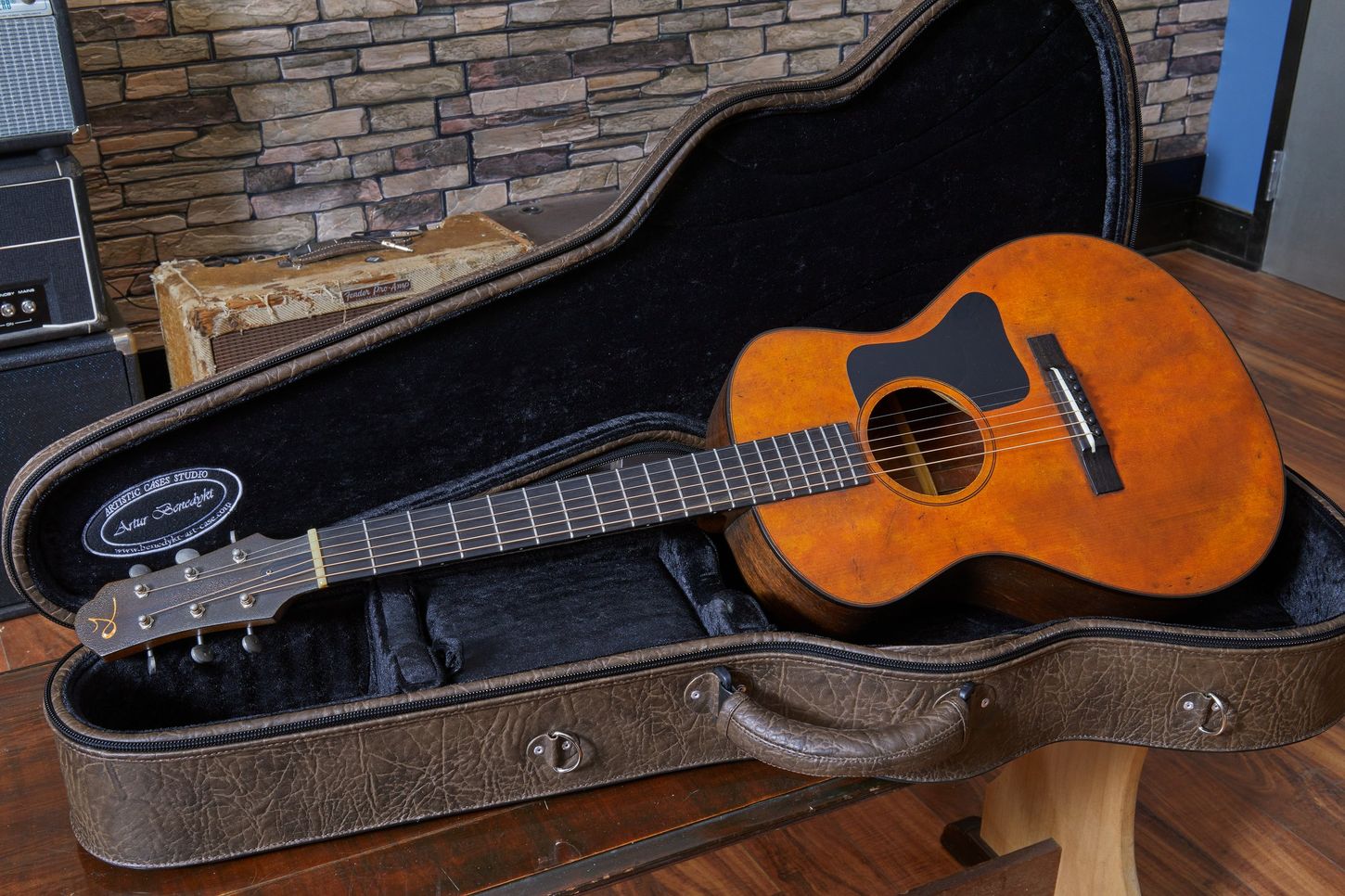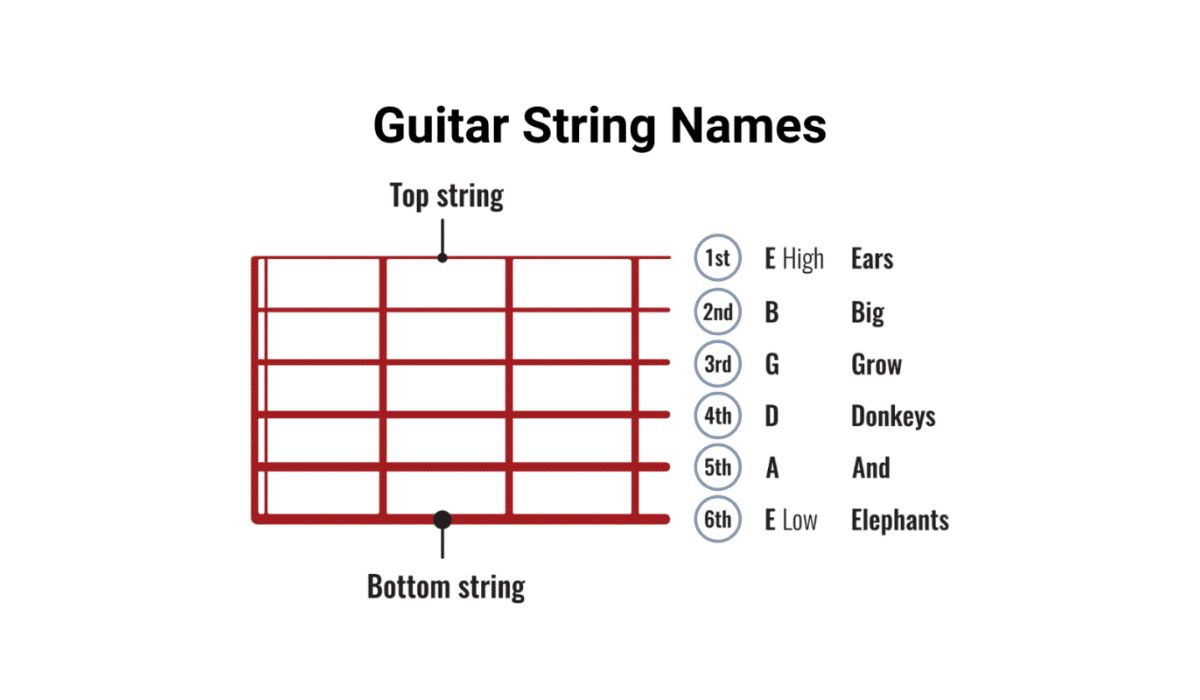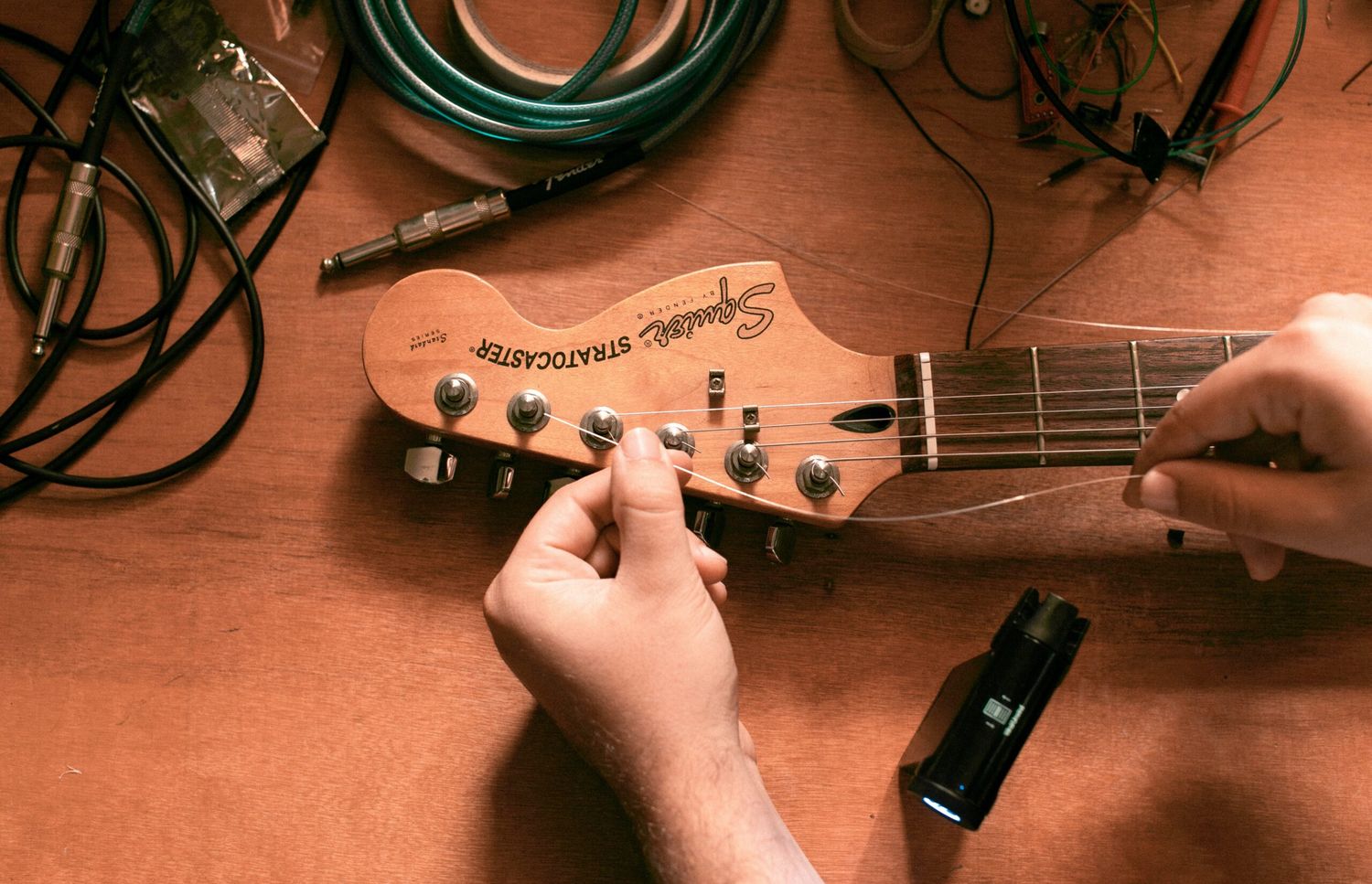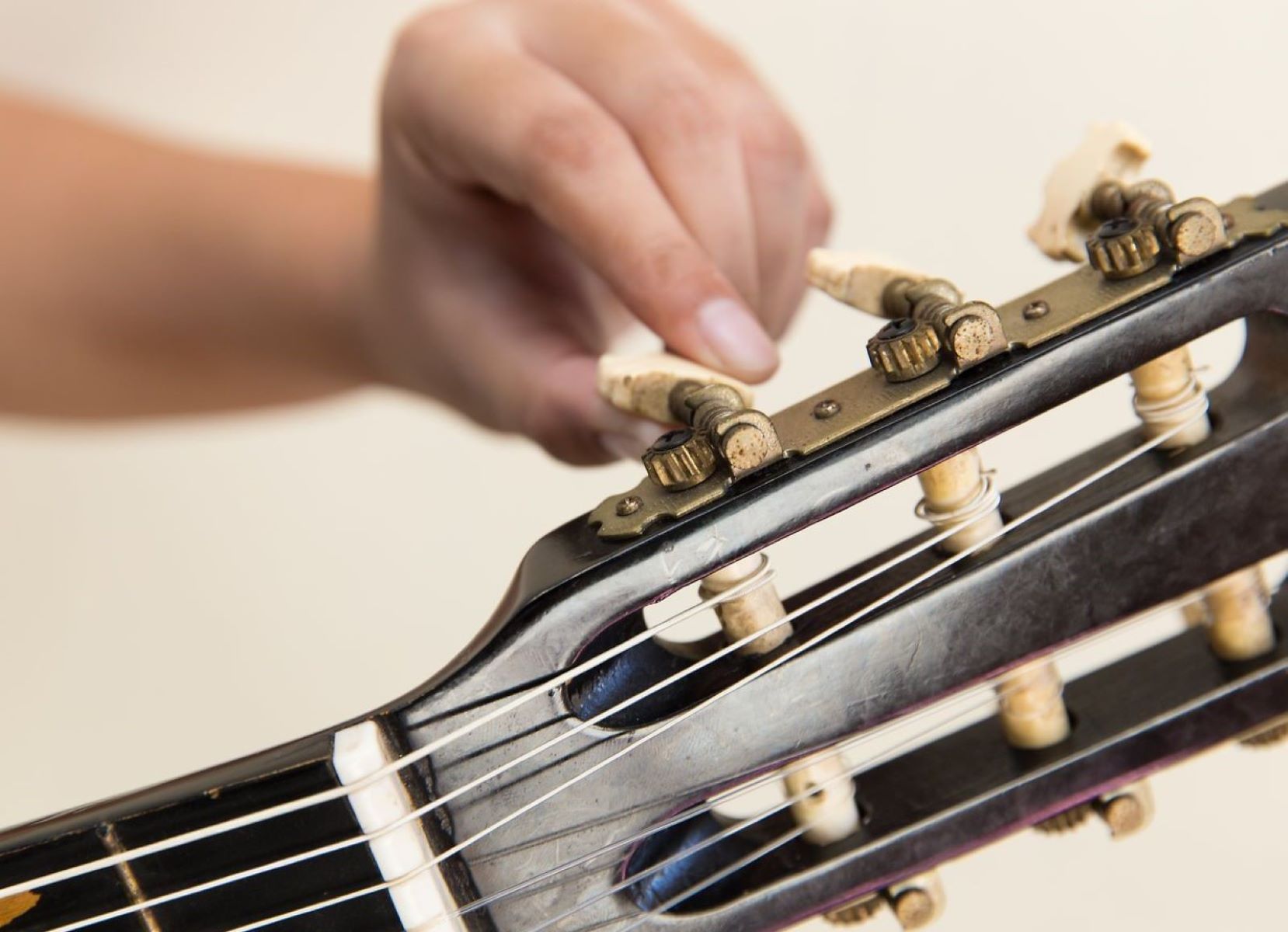Home>Instruments>Guitar>How To Ship A Guitar
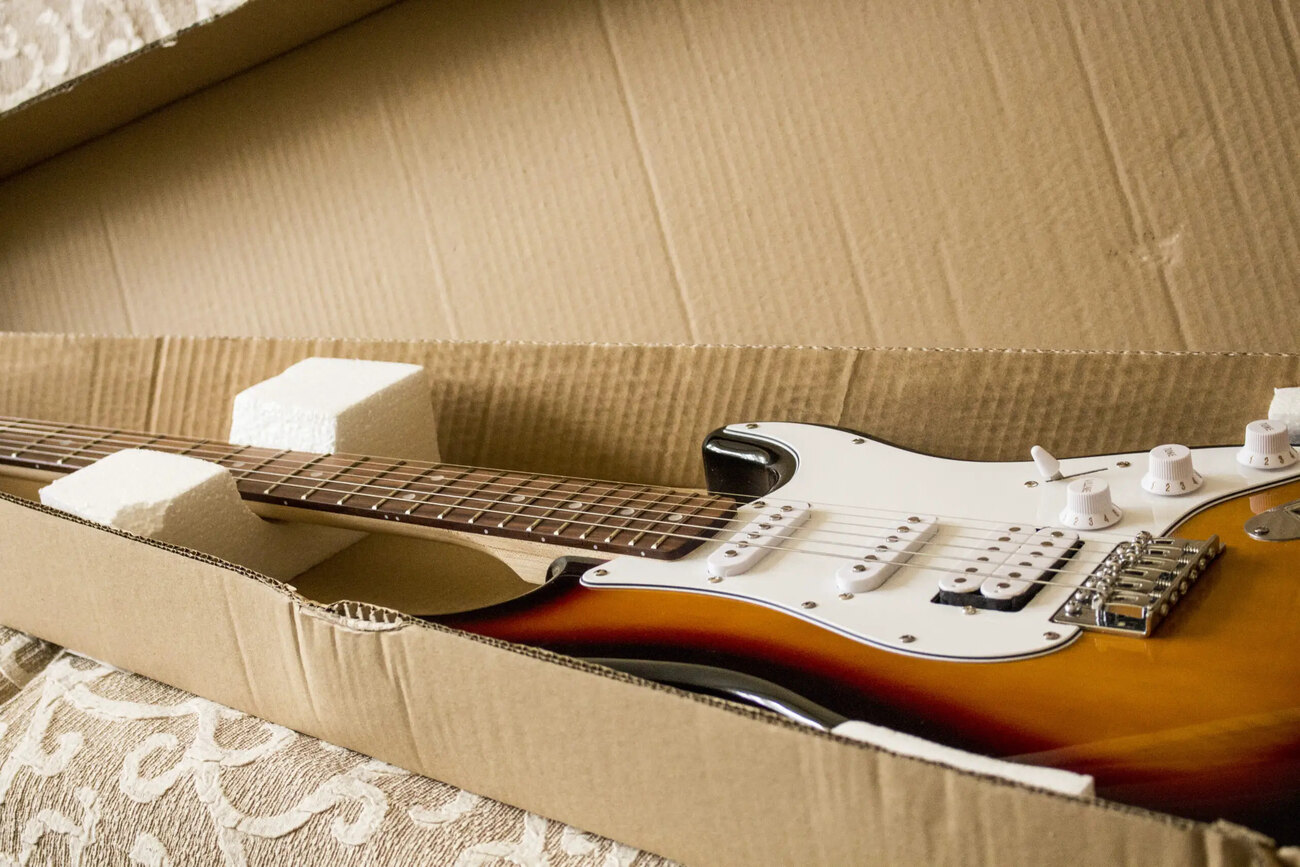

Guitar
How To Ship A Guitar
Published: February 14, 2024
Learn how to ship a guitar safely and securely with our step-by-step guide. Find out the best practices for packaging and shipping a guitar to ensure it arrives in perfect condition.
(Many of the links in this article redirect to a specific reviewed product. Your purchase of these products through affiliate links helps to generate commission for AudioLover.com, at no extra cost. Learn more)
Table of Contents
Introduction
Shipping a guitar can be a nerve-wracking experience for any musician, whether you’re sending it off for repairs, selling it to a buyer, or relocating to a new city. Guitars are delicate instruments that require special care and attention when being packaged and shipped to ensure they arrive at their destination in the same condition as when they left. In this comprehensive guide, we will walk you through the process of shipping a guitar safely and securely, covering everything from packing materials to choosing the right shipping method and ensuring the instrument's protection with shipping insurance.
Whether you're a seasoned guitarist or a beginner, understanding the best practices for shipping a guitar is essential for preserving the instrument's integrity and preventing any damage during transit. By following the steps outlined in this guide, you can have peace of mind knowing that your guitar will reach its destination unscathed.
In the following sections, we will delve into the specific materials needed for packing a guitar, the process of disassembling the instrument for safe shipment, the meticulous packing techniques to safeguard its components, and the various shipping methods available. Additionally, we will explore the importance of shipping insurance, labeling, and documentation to ensure a smooth and secure transit process for your beloved guitar.
Whether you're a musician shipping a prized vintage guitar or a seller sending an instrument to a customer, this guide will equip you with the knowledge and confidence to navigate the intricacies of shipping a guitar with ease and precision. Let's embark on this journey to discover the essential steps for shipping your guitar securely and with peace of mind.
Packing Materials
When preparing to ship a guitar, gathering the right packing materials is crucial to ensure the instrument is adequately protected throughout its journey. Here are the essential packing materials you will need:
- Hardshell Case or Gig Bag: The first layer of protection for your guitar is its case. If you have a hardshell case or a padded gig bag, utilize it to shield the instrument from external impacts and provide a buffer against potential mishandling during transit.
- Bubble Wrap: Wrap the guitar in several layers of bubble wrap to safeguard it from scratches, dents, and minor impacts. Focus on covering the body, neck, and headstock securely.
- Packing Paper: Use packing paper to fill any empty spaces within the case or box to prevent the guitar from shifting during transportation.
- Packing Peanuts or Foam Inserts: Adding a layer of packing peanuts or foam inserts inside the shipping box provides additional cushioning and stability for the guitar.
- Packing Tape: High-quality packing tape is essential for securing the case and sealing the shipping box to prevent it from opening during transit.
- Cardboard or Shipping Box: Select a sturdy, double-walled cardboard box that is large enough to accommodate the guitar case with ample space for packing materials.
- Fragile Stickers: Label the shipping box with “Fragile” stickers to alert handlers to exercise caution when transporting the package.
Ensuring you have these packing materials on hand before shipping your guitar will help safeguard the instrument from potential damage and provide peace of mind throughout the shipping process. With the right materials in place, you can proceed to the next step of disassembling the guitar for secure packaging.
Disassembling the Guitar
Before packing your guitar for shipment, it’s important to disassemble certain components to minimize the risk of damage during transit. Follow these steps to disassemble the guitar safely:
- Loosen the Strings: Start by loosening the tension of the guitar strings to relieve the pressure on the neck and prevent any potential strain or damage. Loosening the strings also helps maintain the guitar’s structural integrity.
- Remove the Guitar Strap: If your guitar has a strap attached, detach it to prevent any tangling or snagging during the shipping process.
- Detune the Guitar: Further reduce the tension on the guitar neck by detuning the strings. This precautionary measure helps protect the neck from excessive stress and minimizes the risk of warping or damage.
- Remove Detachable Components: If your guitar has detachable components such as tremolo arms, pickguards, or any other accessories, carefully remove them and pack them separately to prevent damage or loss.
- Secure the Guitar Case: Place the disassembled components, such as the tremolo arm or pickguard, inside a small bag and secure it within the guitar case to ensure all parts are kept together during transit.
By disassembling the guitar and taking these precautionary measures, you can minimize the risk of damage to the instrument’s delicate components and ensure that it arrives at its destination in optimal condition. With the guitar safely disassembled, you can proceed to the next step of carefully packing it for shipment.
Packing the Guitar
After disassembling the necessary components, it’s time to pack the guitar securely to safeguard it during transit. Follow these steps to ensure the instrument is well-protected:
- Wrap the Guitar in Bubble Wrap: Carefully wrap the body, neck, and headstock of the guitar in multiple layers of bubble wrap to shield it from impacts and scratches. Ensure that the entire instrument is adequately covered and protected.
- Fill Empty Spaces: Use packing paper to fill any empty spaces within the guitar case, ensuring that the instrument fits snugly and does not shift during transportation. This minimizes the risk of internal damage due to movement.
- Secure the Guitar in the Case: Once the guitar is wrapped and the case is filled with packing materials, place the instrument inside the case and ensure it is securely positioned to prevent any shifting or impact within the case.
- Add Additional Padding: If there is any remaining space in the case after inserting the guitar, add more packing materials such as bubble wrap or packing peanuts to provide extra cushioning and support.
- Seal the Case: Close and latch the guitar case securely, ensuring that it is properly sealed and will not open during transit. Use packing tape to reinforce the closure if necessary.
After following these packing steps, the guitar should be well-protected and ready for placement inside the shipping box. By taking these precautions, you can minimize the risk of damage to the instrument and provide it with the necessary support and cushioning for a secure journey to its destination.
Choosing a Shipping Method
When it comes to shipping a guitar, selecting the right shipping method is crucial to ensure the instrument’s safe and timely delivery. Consider the following factors when choosing a shipping method:
- Shipping Timeframe: Determine the urgency of the shipment. If the guitar needs to reach its destination quickly, express shipping services may be the most suitable option.
- Shipping Cost: Evaluate the shipping rates for different carriers and services. Consider your budget and the value of the guitar when selecting a shipping method.
- Shipping Insurance: Verify whether the shipping method includes insurance coverage for high-value items such as musical instruments. Shipping insurance provides financial protection in the event of loss or damage during transit.
- Tracking and Delivery Confirmation: Opt for a shipping method that offers tracking and delivery confirmation to monitor the guitar’s progress and ensure its safe arrival at the intended destination.
- Special Handling for Fragile Items: Select a shipping service that provides special handling for fragile items. Inform the carrier that the package contains a delicate musical instrument to ensure proper care during transit.
After considering these factors, you can choose the shipping method that best aligns with your specific needs and provides the necessary safeguards for shipping your guitar securely and reliably. Once the shipping method is selected, you can proceed with arranging the shipment and addressing the essential details for a smooth transit process.
Shipping Insurance
When shipping a guitar, obtaining shipping insurance is a crucial step in protecting the instrument against potential loss or damage during transit. Here are key considerations regarding shipping insurance:
- Coverage for High-Value Items: Verify that the shipping insurance policy provides adequate coverage for musical instruments, especially high-value guitars. Ensure that the insurance amount aligns with the instrument’s appraised value to safeguard against financial loss in the event of damage or loss.
- Policy Exclusions: Review the insurance policy to understand any exclusions or limitations. Some policies may not cover certain types of damage or mishandling, so it’s essential to be aware of the coverage details.
- Documentation Requirements: Determine the documentation needed to file a claim in the event of damage or loss. Keep records of the guitar’s condition prior to shipment, including photographs and appraisals, to support any potential insurance claims.
- Insurance Costs: Evaluate the cost of shipping insurance in relation to the guitar’s value and the potential risks involved. While insurance adds to the shipping expenses, it provides invaluable protection and peace of mind.
- Carrier Liability vs. Additional Insurance: Understand the extent of liability provided by the shipping carrier and assess whether additional insurance is necessary to fully protect the guitar during transit. Carrier liability may have limitations, making supplemental insurance beneficial for high-value items.
By securing comprehensive shipping insurance, you can mitigate the financial risks associated with shipping a valuable guitar and ensure that the instrument is adequately protected throughout its journey. In the unfortunate event of damage or loss, having proper insurance coverage can provide the necessary recourse and financial compensation to address the situation effectively.
Labeling and Documentation
Proper labeling and documentation are essential aspects of shipping a guitar, ensuring that the package is handled with care and reaches its destination without complications. Here are the key steps for labeling and documenting the shipment:
- Clear and Visible Labeling: Clearly label the shipping box with the recipient’s name, address, and contact information. Additionally, prominently display “Fragile” stickers on the package to alert handlers to exercise caution when transporting the guitar.
- Shipping Labels and Barcodes: Affix the shipping labels and barcodes provided by the selected carrier securely to the package. Ensure that the labels are legible and free from any damage or obstruction to facilitate smooth transit and accurate tracking.
- Documentation of Contents: Include a detailed packing slip or inventory list inside the package, documenting the contents and any accompanying accessories or components. This documentation serves as a reference for both the shipper and the recipient.
- Photographic Documentation: Take photographs of the packaged guitar before it is handed over to the shipping carrier. These photographs can serve as visual documentation of the package’s condition at the time of shipment, providing valuable evidence in the event of an insurance claim due to damage.
- Retain Shipping Receipts: Keep copies of the shipping receipts and documentation, including tracking numbers and proof of shipment. These records are essential for tracking the package’s progress and serving as evidence of shipment in case of any unforeseen issues.
By carefully labeling the package and maintaining thorough documentation, you can enhance the security and traceability of the guitar shipment while providing essential information for both the shipping carrier and the recipient. These measures contribute to a smooth and well-documented shipping process, offering peace of mind to both the sender and the recipient.
Conclusion
Shipping a guitar requires meticulous attention to detail and a comprehensive approach to ensure the instrument’s safe and secure transit. By following the steps outlined in this guide, you can navigate the shipping process with confidence and safeguard your guitar from potential damage or loss. From gathering the essential packing materials to disassembling the guitar, carefully packing it, choosing a suitable shipping method, securing shipping insurance, and addressing labeling and documentation, each step plays a vital role in ensuring a successful and worry-free shipping experience.
It is crucial to prioritize the protection of the guitar by utilizing appropriate packing materials, disassembling the instrument as needed, and selecting a reliable shipping method with the necessary insurance coverage. Additionally, thorough labeling and documentation serve as essential tools for tracking and safeguarding the shipment throughout its journey.
Whether you’re a musician sending your beloved guitar for repairs, a seller shipping an instrument to a customer, or an individual relocating with your musical companion, the knowledge and attention to detail provided in this guide empower you to navigate the shipping process effectively. By taking the necessary precautions and understanding the critical steps involved, you can ensure that your guitar arrives at its destination in optimal condition, ready to be enjoyed and cherished by its recipient.
Remember, the care and diligence you invest in preparing and shipping your guitar contribute to preserving its integrity and ensuring a positive experience for both the sender and the recipient. With the insights gained from this guide, you can embark on the shipping journey with the assurance that your guitar will be well-protected and arrive safely at its intended destination.



